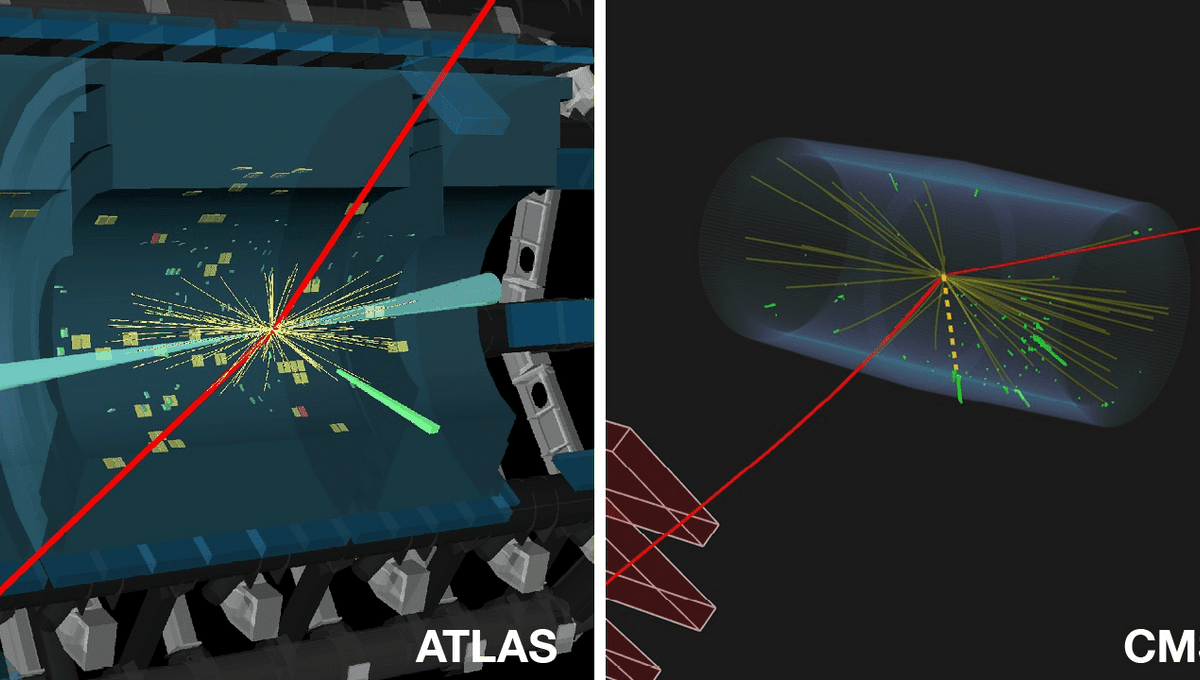
Teams at CERN have announced the first evidence of a rare decay in the Higgs boson at the Large Hadron Collider Physics Conference in Belgrade. The work has yet to be published, and it seems the most important questions about the decay process have yet to be answered, but the announcement nevertheless marks a major step in the quest to understand the elusive particle.
The detection of the Higgs Boson represented the culmination of a six-decade quest. It led to the awarding of the Nobel Prize for physics the following year, but in many ways, it was more like reaching base camp than the pinnacle of Mount Everest. The journey continues, as physicists seek the particles the Higgs becomes after its very brief existence.
In the 1960s physicists, including Professor Peter Higgs, provided explanations for observations in subatomic physics that included a field, which became known as the Higgs field. The field could not be verified at the time, but predictions based on its existence proved so accurate it became widely accepted and a central pillar of the Standard Model of particle physics. The field would need a particle, dubbed the Higgs boson, to carry it.
The Higgs field is essential to explanations of why certain other particles have mass. The Higgs boson also has mass itself and is unique in maintaining that state at very high energies. Many predictions about it, such as its lack of electric charge and spin, have been verified since its discovery a decade ago.
Like most inhabitants of what is sometimes called the “particle zoo”, the Higgs boson doesn’t last forever. Indeed, it decays very fast, a major reason why it was so hard to find. Its lifespan is so short it is detected based on the products it decays into, but these can be hard to distinguish from other outcomes particle collisions.
The Higgs boson can decay in multiple ways, the first of which was reported in 2018. These end up with different particles, and the distribution is thought to depend on its mass, now narrowed down to a tight range around 125.45 billion electronvolts. At this value, the Standard Model of particle physics predicts 0.15 percent (15 in 10,000) will follow a particular decay path, ending up as a photon and a Z boson. However, some of the Standard Model’s competitors predict different proportions. Consequently, making enough Higgs bosons to create a distribution of decay products, could help us choose between these models.
Unfortunately, observing the products of the Higgs decay is no easy feat, let alone doing it for such a tiny proportion of cases.
More difficult still, it is thought Higgs decay leads to a series of “virtual” particles that exist only briefly and are not capable of direct detection. Only after passing through this virtual phase do the photon and Z boson emerge. Even the Z boson, a carrier of the weak nuclear force, is not detected directly. Instead, it decays in about 10-25 seconds to electrons or muons, whose detection reveals its previous presence.
Discovering the nature of the intermediary virtual particles, and whether they represent already known particles or something undiscovered, could be one of the most exciting quests in physics, but also one of the hardest.
Looking back on data collected by CERN’s Large Hadron Collider’s (LHC) second run (2015-2018), the ATLAS and CMS collaborations found an energy peak they suspect represents Higgs decay. The significance is 3.4 standard deviations, enough to make it highly probable, but below the 5 standard deviations considered the benchmark for confidence in particle physics.
Even this was only achieved by combining data from the ATLAS and CMS instruments. During the original Higgs discovery, ATLAS and CMS worked separately and under a strict code of secrecy so that their results could be used to verify each other, which clearly cannot be done this time.
“Each particle has a special relationship with the Higgs boson, making the search for rare Higgs decays a high priority,” said ATLAS’s Pamela Ferrari in a statement.
“The existence of new particles could have very significant effects on rare Higgs decay modes,” added Florencia Canelli of CMS. “This study is a powerful test of the Standard Model. With the ongoing third run of the LHC and the future High-Luminosity LHC, we will be able to improve the precision of this test and probe ever rarer Higgs decays.”
Source Link: Hints Of Rare Higgs Boson’s Decay Reported A Decade After Its Discovery